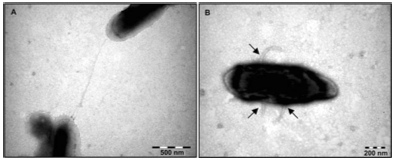Rickettsia felis
A Microbial Biorealm page on the genus Rickettsia felis
Classification
Higher order taxa
cellular organisms; Bacteria; Proteobacteria; Alphaproteobacteria; Rickettsiales; Rickettsiaceae; Rickettsieae; Rickettsia; spotted fever group1
Species
Rickettsia felis
|
NCBI: Taxonomy |
Description and significance
“Rickettsia felis” is an obligate intracellular parasite that was first isolated from cat fleas. It is a gram-negative bacteria that was that differs from Rickettsia typhi by only 32 nucleotide differences3. It was identified in patients clinically diagnosed with murine typhus4. It was originally thought to be a member of the typhus group of rickettsiae, but upon sequencing was found to be closer to the spotted fever group of rickettsiae5.
Genome structure
The genome of R. felis consists of a 1,485,148 bp circular chromosome and two circular plasmids, pRF (62,829 bp) and pRδ (39,263 bp). This results in 1,512 open reading frames that encode proteins2. This genome is much larger than any other Rickettsial organism with the next largest genome being the 1,111,523 bp genome of R. prowazekii2. The two plasmids have identical nucleotide sequences except for a 23,566 bp segment present only in pRF2.
R. felis has multiple genes encoding toxin-antitoxin systems that are rare in obligate intracellular bacteria. These systems may help ensure propagation of bacteria in a eukaryotic host2. R. felis also has genes whose analogs in other bacteria encode conjugative pili proteins, suggesting that some of the R. felis genome may have been acquired by lateral transmission5. It appears that R. felis is the first obligate intracellular parasite to have a conjugative plasmid2. It also has genes homologous to genes encoding streptomycin and penicillin resistance2.
Cell structure and metabolism
R. felis has two types of pili on its cell surface. The first is used to establish contact between two bacterial cells and are most likely specialized for conjugation6. The other type are short, hair-like projections that are most likely involved in attachment to other cells and may be involved in the virulence of R. felis6.
R. felis is thought to generate ATP through the TCA cycle because two enzymes that generate ATP during the cycle and four subunits of the pyruvate dehydrogenase complex that initiate the TCA cycle were identified6. Also, four subunits of ATP synthase and several components of two ABC transporters have been identified6.
Ecology
R. felis is maintained transovarially in fleas and as such is transferred from parent to offspring in the flea eggs. It appears to have no detrimental effect on the flea life cycle. It infects humans bitten by infected fleas and the organism is deposited near the bite site in flea feces8. Infections are rare but appear in areas prone to flea infestations such as certain parts of Texas and Los Angeles and Orange County in California. R. felis infections have also appeared in France, Germany, Brazil and the first Asian case was documented in Thailand. Since fleas can bite multiple human hosts the infection can be readily spread in flea-infested areas8.
Pathology
This organism is an obligate intracellular parasite found in cat fleas, C. felis. It is maintained transovarially in fleas has no effect on the fleas it infects. When a flea bites an animal or human, R. felis is deposited in the flea feces at the bite site8. R. felis infection causes a disease very similar to (and often mistaken for) murine typhus caused by its close relative R. typhi. The only way to differentiate between the two diseases is to use PCR to amplify a portion of a Rickettsia antigen gene7. The main symptom is fever of an unknown origin. Other symptoms include headache, rash, vomiting, and stupor7.
Application to Biotechnology
Does this organism produce any useful compounds or enzymes? What are they and how are they used?
Current Research
Enter summaries of the most recent research here--at least three required
References
Edited by student of Rachel Larsen and Kit Pogliano

